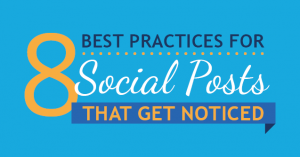 If you have a small or medium business website and want to be found organically on search engines, like Google, Bing, Yahoo, and others, then you must consider adding search engine optimization (SEO) to your marketing plan. There are lots of factors that influence rankings on search engines. Those who practice the best and most up-to-date SEO techniques reap the benefits of appearing at the top of search results. Depending on the competition density in your industry, the size of your market, or many other factors, all can have major influence in the outcome of ranking your business website on search engines.
If you have a small or medium business website and want to be found organically on search engines, like Google, Bing, Yahoo, and others, then you must consider adding search engine optimization (SEO) to your marketing plan. There are lots of factors that influence rankings on search engines. Those who practice the best and most up-to-date SEO techniques reap the benefits of appearing at the top of search results. Depending on the competition density in your industry, the size of your market, or many other factors, all can have major influence in the outcome of ranking your business website on search engines.
Generally, there are two types of SEO strategies: OnSite SEO and OffSite SEO. Like the phrasing implies, OnSite SEO uses techniques applied on your website to increase your website’s search ranking. OffSite SEO uses techniques applied on external websites to increase your site’s search ranking.
Sidenote: I recommend possessing a professional degree of updated industry knowledge before performing any OffSite SEO strategies. Poor offsite SEO practices have potential to hurt your website ranking and traffic, and waste valuable time. Following poor OffSite SEO procedures may make the recovery process lengthy and potentially expensive.
Below is a list of OnSite SEO techniques that technologically savvy small and medium business owners and marketers may often do on their own.
Keyword Research
Keyword research should be every small business owner’s or marketer’s first step when creating an effective localized SEO campaign. Keyword research allows you determine which keywords you want to rank on search engines. Keyword research is an activity that may require a plan to allocate a significant amount of time.
Not only should you plan to use keywords that represent your business and services, but your secondary goal should be to find the best opportunities to rank. If you are in a competitive industry and/or market, then you may NOT want to focus on the highly trafficked keywords.
Example. A plumber in a large market: Instead of focusing on “Denver Plumber”, you might want to choose one of your top services like: “Denver drain cleaning”. Smart SEO keyword research depends on industry, geo-location, competitors, and the goal of your website.
Metadata
“Metadata” describes your webpage. You should use optimized metadata for each page of your website. This optimization will come from the keyword research step and should properly describe the content of the webpage. Relevant metadata should be applied to both of these meta tags:
- Title Tags: Within your HTML code, a title tag looks like this: <title>Insert Keywords Here</title>. Use “Insert Keywords Here” for keywords, business name, and anything else that describes the webpage. Keep in mind, tags should have a maximum of 70 characters. Do not duplicate title tags on other pages of your website.
- Meta Description: Within your HTML code, a description tag looks like this: <meta name=”description” content=”Insert Description Here”/> Directly, a meta description does not have a direct impact on your SEO rankings. However, an optimized meta description can have a significant impact on click-through-rates (CTR). Further, CTR is an important component of the SEO algorithm ranking process. Keep in mind, description tags should be maximized at 160 characters. Do not duplicate the description tags on other pages of your website.
- Should I Use Meta Keywords? Don’t waste your time. Google announced several years ago that because of keyword stuffing, they no longer use meta keywords as a ranking factor.
Meta Data
Body Text Content
Content is essential to a webpage’s SEO potential. Without content, it’s difficult to determine what your webpage is about. Obviously, this will cause confusion to your viewers and will make it impossible for search engines to know what your webpage offers.
- Text Content: While indexing webpages of your website, search engines read words (not media). Therefore, a webpage should have a fair amount of total words to be considered a relevant webpage that provides suitable value.
- Keyword insertion: Having keywords within your body text is an important part of onsite SEO. However, using too many keywords within the body text is called keyword stuffing and frowned upon by search engines. If you abuse your content with keyword stuffing, you are taking the risk of being penalized by search engine algorithm updates.
- Header Tags: Directly, header tags still have a major influence on SEO rankings. Therefore, using some keyword insertion here is a still a good idea. Most importantly, header tags (H1, H2, H3, etc.) help structure your content and improves the flow of your webpage.
Website Structure
Not only is a well-structured website user-friendly, but an influential component of SEO rankings. A structured website helps with web crawlers easily index your website.
- Hierarchy: Prioritizing and categorizing your webpages is important concept of practicing good website hierarchy. Most of this can be structured in your navigation menus but using a URL hierarchy is most important. For example the URL Hierarchy for the above-mentioned post is: http://www.business2community.com/small-business/homepage-practices-smb-websites-01188734, the homepage is the priority URL, the small business is the category, and the blog post lives within this category.
- Easy Navigation: Well-placed navigation menus are very important, but properly categorizing the navigation silos helps with website hierarchy.
- Sitemap: A sitemap is a file which contains a list of all of the pages on your website. This shows search engines how your content is organized and structured.
- Sitelinks: Sitelinks displayed in search results are an award you receive when you have a properly-structured search engine optimized website. Sitelinks are determined by Google’s search algorithms and display only when your site is properly optimized and the results are relevant to the search query.
Bonus Round:
- On-site Blog: There are many onsite SEO benefits of having a blog, so I’ll keep it simple. “An active blog is great for SEO, and that all you need to know.”
- Alt Tags:Images bring visual appeal to your viewers. Search engines don’t read images, they read alt tags. Name your images using alt tags for SEO purposes.
- Be Active: Adding content to your website is a great way of being active. (Like an active onsite blog). Periodically updating your content throughout your website is always a good practice.
- Google Analytics. Google Analytics tells the ultimate story of the performance of your website. Learning Analytics will help you learn more about your website’s strengths, weaknesses, and SEO opportunities.
This article originally appeared on SmartReach Digital.
(224)







